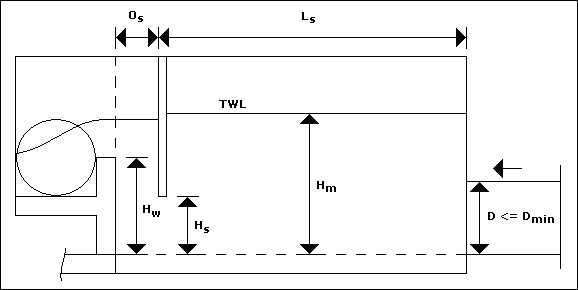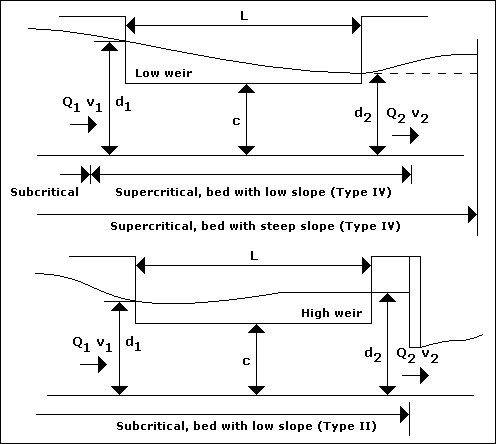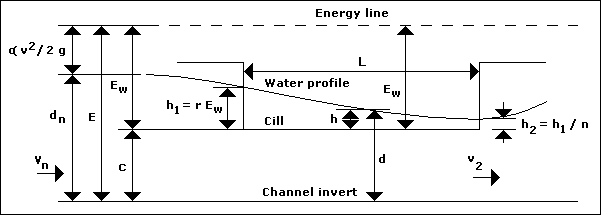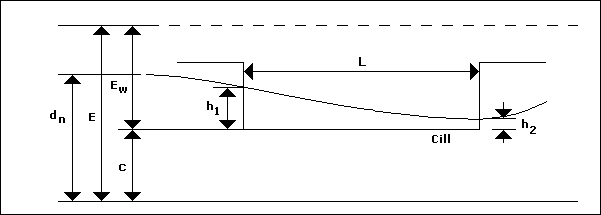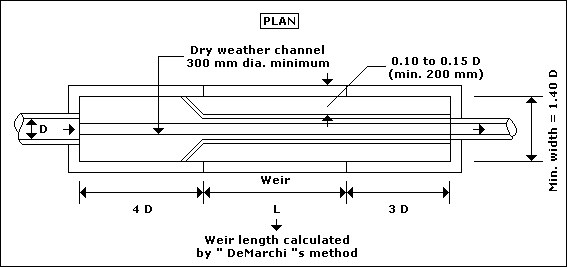n : number of wrong connections expressed as a percentage and let the same proportion exist between the surface water and the foul sewers
Q F : average volume of foul sewage passed to sewage works per annum
B F : average BOD concentration of foul sewage
L F : average BOD load of foul sewage
Q S : average volume of surface water from impervious area per annum
B S : average BOD concentration of surface water
L S : average BOD load of surface water
dL : percentage change in BOD load to watercourse
E : overall removal efficiency at notional sewage works, assumed constant
K = ( Volume of surface water per annum ) / ( Volume of foul sewage per annum ) = ( Q S ) / ( Q F )
Referring to figure given below ;
( 1 ) Load in foul sewer due to foul sewage = ( L F ) ( 1 - n )
Load in foul sewer due to surface water = ( n ) ( L S )
Load to sewage works = ( L F ) ( 1 - n ) + ( n ) ( L S )
Load in effluent from sewage works = ( 1 - E ) [ ( L F ) ( 1 - n ) + ( n ) ( L S ) ]
( 2 ) Load in surface water sewer due to storm water = ( L S ) ( 1 - n )
Load in surface water sewer due to foul sewage = ( n ) ( L F )
Load discharged from surface water sewer = ( L S ) ( 1 - n ) + ( n ) ( L F )
( 3 ) Total load to watercourse = ( 1 - E ) [ ( L F ) ( 1 - n ) + ( n ) ( L S ) ] + ( L S ) ( 1 - n ) + ( n ) ( L F )
= ( 1 - E ) [ L F - ( n ) ( L F ) + ( n ) ( L S ) ] + ( L S ) ( 1 - n ) + ( n ) ( L F )
= L F - ( n ) ( L F ) + ( n ) ( L S ) - ( E ) ( L F ) + ( E ) ( n ) ( L F ) - ( E ) ( n ) ( L S ) + L S - ( n ) ( L S ) + ( n ) ( L F )
= ( E ) ( n ) ( L F - L S ) + L F + L S - ( E ) ( L F )
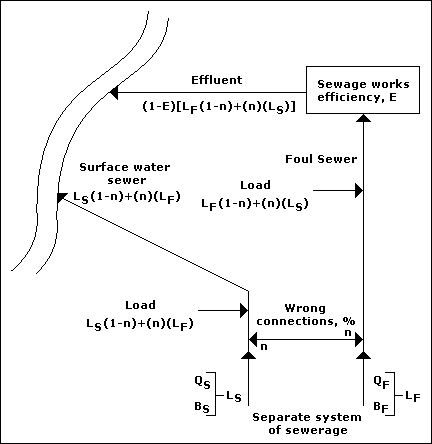
With no wrong connections, i.e. n = 0 ;
Load = L F + L S - ( E ) ( L F ) = ( 1 - E ) ( L F ) + L S
( 4 )
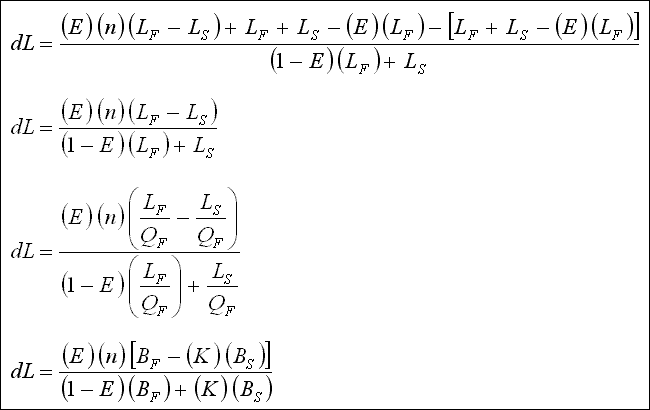
( 5 ) K = ( Q S ) / ( Q F )
and Q S = ( 10 ) ( A ) ( C ) ( I )
where ; Q S : the volume of surface water run - off per annum ( m 3 ), A : the contributing area ( ha ), C : the overall run - off coefficient and I : the annual precipitation ( mm ).
Q F = [ ( P ) ( G ) ( 365 ) ] / ( 1,000 )
where ; Q F : the volume of foul sewage per annum ( m 3 ), P : the population and G : the DWF ( L / hd . d ).
K = [ ( 10 ) ( A ) ( C ) ( I ) ( 1,000 ) ] / [ ( P ) ( G ) ( 365 ) ] = [ ( 27.4 ) ( A ) ( C ) ( I ) ] / [ ( P ) ( G ) ]
